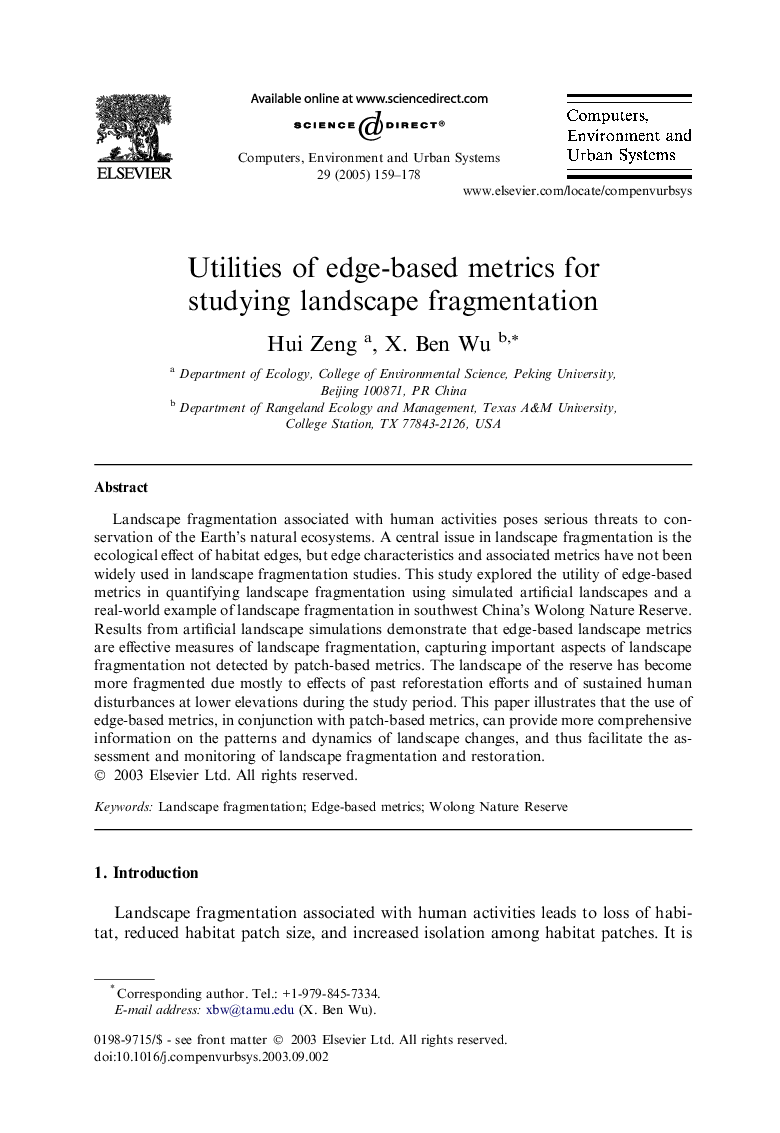| Article ID | Journal | Published Year | Pages | File Type |
|---|---|---|---|---|
| 10352228 | Computers, Environment and Urban Systems | 2005 | 20 Pages |
Abstract
Landscape fragmentation associated with human activities poses serious threats to conservation of the Earth's natural ecosystems. A central issue in landscape fragmentation is the ecological effect of habitat edges, but edge characteristics and associated metrics have not been widely used in landscape fragmentation studies. This study explored the utility of edge-based metrics in quantifying landscape fragmentation using simulated artificial landscapes and a real-world example of landscape fragmentation in southwest China's Wolong Nature Reserve. Results from artificial landscape simulations demonstrate that edge-based landscape metrics are effective measures of landscape fragmentation, capturing important aspects of landscape fragmentation not detected by patch-based metrics. The landscape of the reserve has become more fragmented due mostly to effects of past reforestation efforts and of sustained human disturbances at lower elevations during the study period. This paper illustrates that the use of edge-based metrics, in conjunction with patch-based metrics, can provide more comprehensive information on the patterns and dynamics of landscape changes, and thus facilitate the assessment and monitoring of landscape fragmentation and restoration.
Related Topics
Physical Sciences and Engineering
Computer Science
Computer Science Applications
Authors
Hui Zeng, X.Ben Wu,
